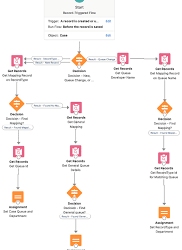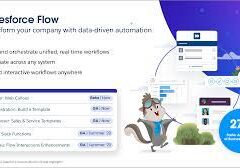Every month Salesforce announces retirement and sundowning of products and features. For long-time Salesforce power users, this one feels like the end of an era. Salesforce has announced the end of support for Workflow Rules and Process Builder in 2025.
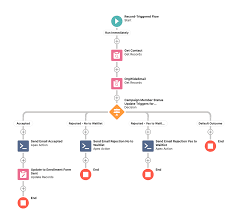
Scheduled Paths are a replacement for Scheduled Actions in Process Builder and Time-Based Workflow Rules. And they even have some new and improved features like support for minutes! Flows can now call other sub-flows, a much-longed-for replacement for Process Builder’s ability to call Flows.
End of Support for Workflow Rules and Process Builder
Salesforce will no longer be supporting Workflow Rules and Process Builder on December 31, 2025, and we recommend that you migrate your automation to Flow Builder by that time.
Have you taken advantage of all the powerful features of Flow? Not yet? Have no fear, and go with the Flow! We’ve curated a comprehensive guide of resources to take you from zero to hero on your journey with us to migrate your organization from Workflow Rules and/or Process Builder onto the newer and more powerful engine of Flow!
Why move to Flow?
What’s happening with Workflow Rules and Process Builder? Salesforce is starting the process of moving away from Workflow Rules and Process Builder, and transitioning to the more feature-rich functionality of Flow.
You’re also probably wondering why Salesforce is retiring Workflow Rules and Process Builder. Salesforce wants to focus development on a modern, extensible, low-code automation solution in Flow Builder, which led to retire the previous features.
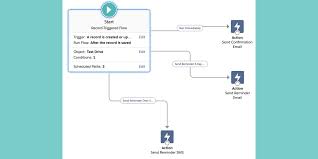
What does this change mean for me?
If you have active Workflow Rules or Process Builder processes running after 2025, they will no longer receive customer support or bug fixes.
What action can I take?
We recommend implementing a plan to migrate any active rules or processes to Flow Builder before the deadline. Depending on the complexity of your org, this migration may take a significant amount of time and testing, so we recommend starting now. To assist in the migration process, we have a Migrate to Flow tool and extensive support resources available.
What happens if I don’t take action?
After December 31, 2025, Workflow Rules and Process Builder may continue to function and execute existing automation, but customer support will not be available, and bugs will not be fixed.
How do I identify affected users?
You can identify whether you have active workflow rules by going to Setup | Process Automation | Workflow Rules and sorting the Active column for checkmarks.
You can identify whether you have active Process Builder processes by going to Setup | Process Automation | Process Builder and sorting the Status column for Active.
If you have more questions, open a case with support via Salesforce Help. To view all current and past retirements, see Salesforce Product & Feature Retirements.
What does the transition to Flows entail?
The transition is set to take place in multiple phases. The first phase began with the Winter ’22 release, wherein the ability to create net-new Workflow Rules was turned off. In Summer ‘23 release the ability to create net-new processes in Process Builder will be disabled. In the last phase, Workflow Rules and Process Builder will go away entirely, and any platform automation will be leveraging Flow. This phased approach will allow administrators ample time to transition to Flow with as minimal effort as possible.
What changed in the Winter ’22 release?
As of Winter ’22, we’ve blocked the creation of Workflow Rules. You can still activate, deactivate, and edit any existing Workflow Rules. To test and create Workflow Rules for use in managed packages, developer orgs still allow you to create Workflow Rules. Process Builder has remained unaffected during this period. For new automation, use Flow. Link to Release Notes
What changed in the Summer ’23 release?
Starting in Summer ’23, Salesforce began blocking the creation of Process Builder Processes. Much like workflow rules above, you can still activate, deactivate, and edit any existing Processes. For new automation, use Flow.
How can existing Workflow Rules & Processes be transitioned to Flow?
A tool called “Migrate to Flow” allows you to covert existing Workflow Rules & Processes to Flow in an org, at the click of a button. More information about this tool can be found here. There are a few considerations to keep in mind as we roll out this tool.
If your organization relies heavily on existing Workflow Rules or Process Builder, please consider starting the migration process today using the Migrate to Flow tool, rather than when the deadline approaches. This will also allow you to test the migrated Flows in small batches to ensure your organization’s needs are adequately met.
How can I get started in Flow?
For those with limited exposure to Flows, tinkering in a trailhead playground, demo org, or other non-production org is a great way to explore the capabilities of Flows. Once ready, admins can try creating any new automation needed in their organization in Flows rather than in Process Builder.
Trailhead – The best place to start!
Build Flows with Flow Builder
Record-Triggered Flows
Automate Your Business Processes with Salesforce Flow
Automation Home Page – Watch videos, read blog posts, or explore other Trailhead offerings related to Flows.
Trailhead Community Topics – Join the discussion!
#Flow
#Automation
What about feature parity between Workflows/Processes and Flows?
During the last few releases, many of the biggest parity gaps between Workflow Rules/Process Builder and Flow have been addressed already, including:
- Scheduled Paths are a replacement for Scheduled Actions in Process Builder and Time-Based Workflow Rules. And they even have some new and improved features like support for minutes!
- Flows can now call other sub-flows, a much-longed-for replacement for Process Builder’s ability to call Flows.
- Flow supports a variety of ways to track what has changed during a record update. Often, you want to build logic that keeps track of what kind of edit was made by the user in the particular update.
- Flow formulas support ISCHANGED(), ISNEW(), and PRIORVALUE().
- Flow operators now show “is changed” as an option in the dropdown menu.
- Flow entry conditions and decisions allow you to choose whether you’ll gate your conditions as being newly met (My status was changed to equal ‘Prioritized’ in this specific edit versus my record was updated and its status still equals ‘Prioritized’).
- Flow contains an automatic variable called $Record__Prior which gives you the state of the record prior to the update. This allows you to reference any particular field value, and you can check whether it equals null if you want to distinguish between create and update.
- Flow now supports calling Outbound Messages as well as Email Alerts from Workflow Actions.
- Control the order of execution of your triggered flows and orchestrations by object using Flow Trigger Explorer and the trigger order field in your triggered flows.
Additionally, more and more gaps are being addressed with each new release.
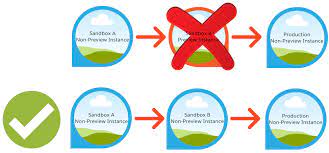
What about Approval Processes, Email Alerts, and other functionality operating on the workflow engine?
There are no plans to retire any of these auxiliary features; however, each of them can be leveraged through flow (or Flow Orchestrator, in the case of approval processes), without the need to use processes or workflow rules at all.
Flow Trailhead – Click Here






